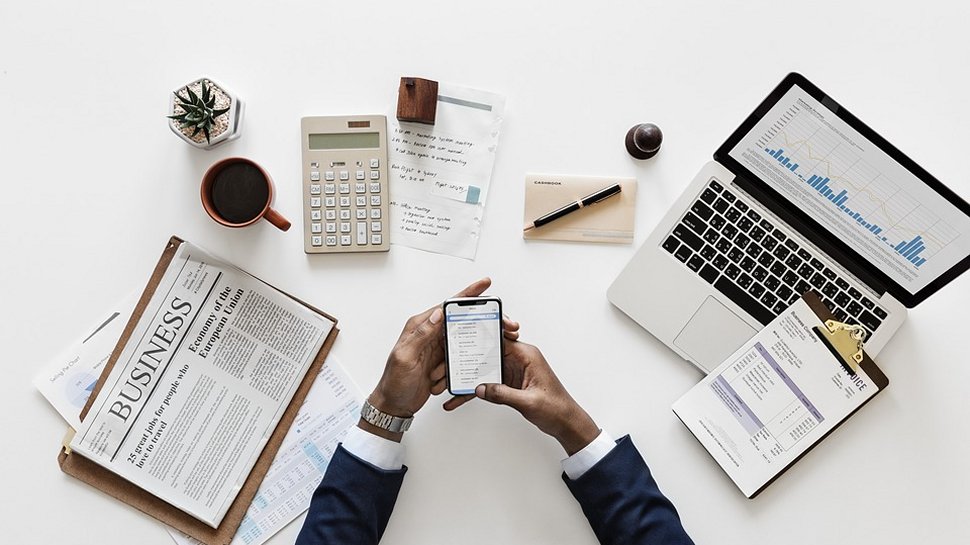An office is not just a location, it’s a place to go to get your work done. The space has to overcome several obstacles and tick the boxes on an extensive list of necessary components which vary depending on the type and style of business it caters for.
The company’s vision and culture should determine the office layout and specific features. Unfortunately, in a finite world of budgetary and spatial restrictions, a company may be limited in its ability to achieve maximum results. It’s not just about scope for imagination. The real world has limitations, but making smart choices and implementing innovative designs within the workplace will transform the office into a versatile hub of productivity.
Now, how do you make the office great again?
What you think you need
You could build a feature wall and add a bold mural of Donald Trump, but, seriously, don’t do that. Plus, he is so yesterday’s news and since Andy Warhol is dead Trump’s probably not popular artistic material to plaster on that wall. Although tempting as an interesting social experiment, he won’t inspire productivity.
And you might be tempted to redesign the office space concept from scratch, but in so doing, you are wasting time and resources which a sound business model should always avoid. Why not learn from others’ attempts to create the best office environment?

Dissecting the ‘office of yesterday’ prototype
You can learn from history, and by rebuilding the office place from scratch, you are dismissing historical prototypes completely. Yes, there are flaws in that traditional model, but there are good points to take away from it as well. Even the failures have helpful take-away points to learn from. So keep in mind what you like from past prototypes and what you don’t like.
The 1950-60s. Open-plan factory floors with desks placed nearby each other during the 50s, and in the 60s, cramped, three-sided cubicles in a large, open room with the warmth and personality of a warehouse, the smell of stale smoke and cinders of the staple ashtray on every desk.
The 1980-90s. Flash forward to the 80s when the office décor moved to cool neutral tones of grey concrete and stark white walls and ceilings, where the idea of green in the office meant a splash of colour from a fake pot-plant or a woman’s rayon blouse. If the movie Die Hard is a realistic representation of the 80s office, which I like to think that it is, then the 80s office was party central and the open spaces were great to host departmental shindigs.
If you were somebody in the hierarchy, you got your own office of some description. Maybe you had a window looking out onto the world if only the adjacent parking lot; or, if Office Space is a true indication of the 90s, and it is, maybe the only window you had was the Microsoft Windows logo on your computer or the internal glass window making your office space transparent to your underling colleagues.
Every decade seems to have their own versions of the open-plan office focusing on different aspects, such as keeping an eye on employees, boosting productivity, or inter-office collaboration. But do you need Big Brother looking over you, micro-managing your every move? No. Bringing back the open-plan space needs to have a vital impact that fits into your decade for your generation.

Envisioning the ‘office of the future’ prototype
What will open-plan mean for the future workplace? You could let your imagination go wild here. There are many popular media sources to draw fantastical conclusions on life in the future, such as The Jetsons, with flying cars and robot servants, Star Trek with the office-life taking place in a spaceship, to Minority Report with tech bugs infiltrating buildings to scan vital statistics, to The Matrix and crazy-real, virtual reality.
Even Google’s 2000-something campuses, with celebrity speakers, endless daily perks, such as free meals and the complete village of professional health and wellness services boggle the mind’s crazy concept of the future’s corporate office space. But in-house cafés, on-campus doctor’s offices and shuttle services are out of reach for anyone but the elite few powerhouse giants.
Consider your workforce
What works for some people doesn’t work for others. This has to be one of the top considerations for any forward-thinking office redesign plan. Considering the people who work for you is central to your design concepts. Get their opinions. Ask them directly, ‘What do you need? How do you work best?’
Finding out from your particular workforce the features and creature comforts that bring out the best in them has to be your starting point. Ask them to envision the perfect workplace, their optimum workspace, and what they like most about their home environment.
Recreating the ‘home office’ prototype
Where do they spend their free time at home? When they have to work from home, an ever-increasing change in the normal lifestyle, where do they go to be most comfortable and most productive? Do they sit in the open-plan kitchen-dining-living space, the heart of the home? Or, do they retreat to the quiet, enclosed study for some creative respite?
People are a company’s most valuable and versatile asset. It makes great sense to model your office plan after them and what they need to achieve optimum productivity. Keeping your workforce happy and healthy is crucial to your company’s happiness and wellbeing.
Creating the ‘evolving office’ prototype
What this looks like might surprise you because it is a hybrid model that adopts aspects from all of the above prototypes. Versatility is key. If you can harness this elusive concept, you will have the ideal workspace that aligns with budgetary and spatial restrictions that are almost certainly factors at play.
Quiet, enclosed office spaces. Your new office space should incorporate small, closed office spaces with hot desks, even work pods, that provide quiet reflection for concentration, much like a University’s library’s study rooms, or the home office.
Also having quiet rooms available and able to function as quiet places where you can have private conversations, phone or video chats with clients is a handy resource.
Team meeting spaces. Larger rooms that can be closed off or enlarged for team projects, big enough to house whiteboards, training tables, and other project tools, like UHD display screens.
Open-plan hub. You need to have an open plan area where everyone comes together to brainstorm, collaborate, hang out and eat, and can also be utilised as a meet-and-greet, mixer space for the company. This is likely the most versatile space and will take up the majority of your office floor plan. This space is the heart of the office like the open-plan kitchen/dining/living is the heart of the home.
Workstation areas. Provide a collective space for a team with a decent standing desk that is comfortable and adjustable. This might be an open-plan space for each team, department, or the entire company, depending on its size and needs.

Features of the ‘versatile office’ space
Moveable, sliding walls to alter workroom sizes can make even enclosed areas adjustable. Promote wellness with features such as stand-up desks to promote better personal health and fitness, a light workout room for some yoga, meditation, stationary cycling, and stretching, or a gym if you’re able. Supplying shower rooms for those who work out at lunch or cycle to work show that you put your stamp of approval on fitness.
Mix up the café space with a combination of tall bar leans and sit-down tables. Provide an entertainment space with couches and comfy chairs to hang out on break, packed with some fun features like video gaming, foosball or table tennis, or even a couple of board or card games, tactile puzzles, and such.
In conclusion
Making the office environment a great place to work again as an innovative, creative, productive, and healthy workplace means blending the old with the new. Retrofit by taking a little from column A and a little from column B. Determine what your company’s needs are by asking the people who work there what their needs are. You’ll end up with a versatile office space that meets the needs of now and grows with you into the future.






